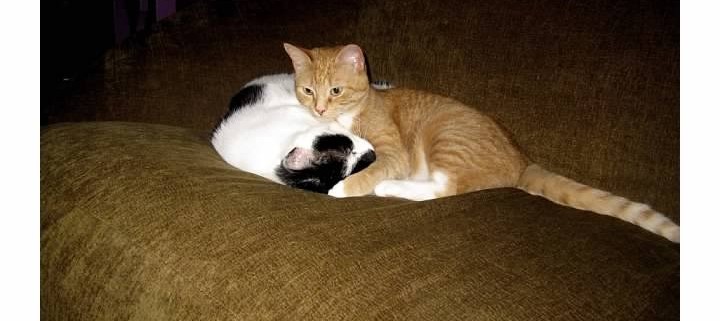Fleas in Cats
Fleas are tiny brown bugs that live on your cat’s body and feed off their blood for nourishment. Fleas are uniquely adapted to live on your cat and easily move through their fur. Their bodies are very narrow making it easy for them to maneuver through even the thickest coats and their long legs allow them to jump large distances. Fleas are bothersome to cats because their bite is uncomfortable and itchy. Some cats are allergic to flea bites and can develop a condition called Flea Allergy Dermatitis where their skin becomes inflamed, scabby and they can lose fur.
Fleas can lead to additional problems because they can act as a carrier for tapeworm larva. While grooming, a cat may ingest a flea that is carrying tapeworm larva and while the flea dies in the cat’s GI tract, the tapeworm larva can grow in their intestines. Tapeworms can be diagnosed by a fecal exam from your vet and treated with oral medication.
If your notice your cat is especially itchy, the best way to check for fleas is to brush your cat on a light colored surface or piece of white paper. After the brushing spray water over the surface. If you cat has fleas the grooming will brush off “flea dirt” that will be visible on the white surface. “Flea dirt” is actually feces from the fleas and since fleas eat blood, the feces will leave little red stains when wet. Flea baths are the best way to get rid of fleas, but you will also need to do a thorough cleaning of your home and the cat’s bedding to get rid of any remaining eggs. When dealing with a flea infestation it is important to vacuum the whole house and dispose of the vacuum bag because flea eggs and larva can quickly re-infest in your home if even just a few eggs are left behind.
Talk to your veterinarian about topical flea treatments. There are lots of products that you can apply to the back of your cat’s neck on a monthly basis that is absorbed through the skin and into the cat’s body that will repel or kill fleas. A variety of flea collars, sprays, dips and shampoos are also available, but it is best to follow your vet’s recommendations because cats can be very sensitive to these types of products.
Studies
Comparison of two techniques for the detection of flea faeces in canine and feline coat brushings.
Insecticide/acaricide resistance in fleas and ticks infesting dogs and cats.
Extreme human annoyance caused by Ctenocephalides felis felis (cat flea).


